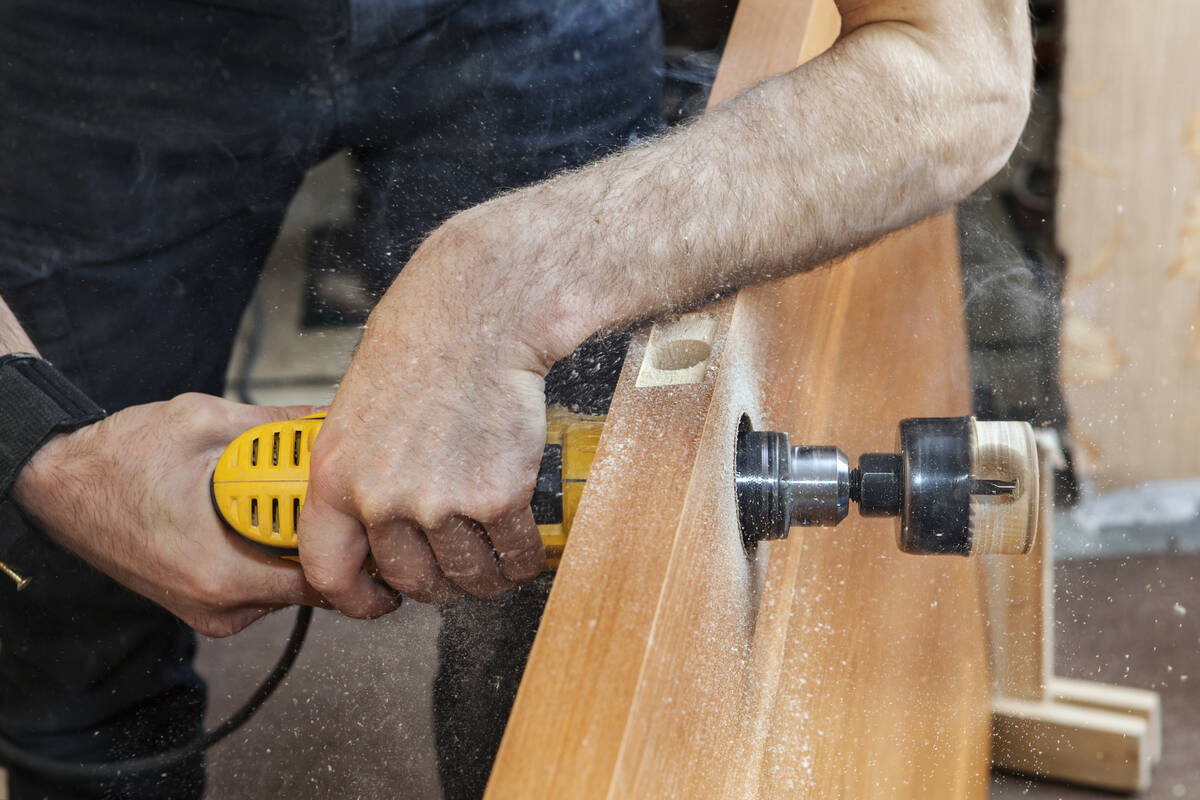How to add a deadbolt to your front door
Q: I have a wooden entry door with a locking handle, but no deadbolt. I want to install one to make the door more secure. How do I do this?
A: Having a door without a deadbolt is like mashed potatoes without gravy, macaroni without cheese, chips without dip — you get the picture.
If you were simply replacing an old deadbolt with a new one, this would be a five-minute job. Instead, you have the added pleasure of drilling a couple of large holes in the door to house the deadbolt.
The worst part of this job is drilling the holes. Don’t worry, though, because deadbolt manufacturers include a template that you tape around the door so that you drill the holes in the right places.
You’ll need a couple of specialized tools. For about $25, you can get a deadbolt installation kit with a 1-inch drill bit and a 2⅛-inch hole saw.
Start by marking the door edge between 3 inches and 6 inches above the doorknob. Tape the template to the door at this mark. The template will wrap around the edge of the door showing you where to start drilling the holes. Mark the door edge for the 1-inch hole (the latch hole), then mark the door face for the larger cylinder hole. Most deadbolts are adjustable for either a 2⅜-inch or 2¾-inch backset. Choose the distance from the door edge that aligns the deadbolt with the doorknob.
Use a one-eighth-inch bit to drill a pilot hole through the template at both the latch hole and the cylinder hole. The template will have the center locations marked. Next, chuck the hole saw into your drill and start drilling the cylinder hole. Drill about halfway through one side of the door, pull out the drill, then drill from the other side to complete the cut. This avoids tearing out the other side of the door as the saw goes through it.
With the door closed, stick a 2-inch nail into the cylinder hole and through the pilot hole you drilled for the latch. Press the nail into the doorjamb so that it makes an indentation in the jamb. Open the door and use the 1-inch bit to drill a hole at the indentation to a depth of 1 inch. Finally, drill the 1-inch latch hole through the edge of the door so that it reaches the cylinder hole.
Insert the latch into the latch hole and trace around the face of the latch. Remove the latch and chisel out this area to a depth of about one-eighth of an inch or until the latch is flush with the edge of the door. Screw the latch into place on the door’s edge.
Place the exterior side of the cylinder (the side with no visible screws) on the exterior side of the door and align it with the holes in the latch. Push it into the hole so that all of the parts are aligned with the latch.
Slide the interior side of the cylinder (the side with the screw holes and the thumb knob) over the torque blade (the arm that pushes the latch out of the door) so that it also aligns with the hidden screw holes from the exterior side of the cylinder.
Insert the machine screws into the cylinder and tighten. Check the fit of the latch bolt into the doorjamb hole to make sure it moves freely.
Hold the strike plate over the strike hole and trace the outline onto the doorjamb. Chisel out this area so that the strike plate sits flush on the doorjamb and secure it with screws.
Mike Klimek is a licensed contractor and owner of Las Vegas Handyman. Send questions to handymanoflasvegas@msn.com or 4710 W. Dewey Drive, No. 100, Las Vegas, NV 89118. Visit handymanoflasvegas.com.
Do it yourself
Project: Installing a deadbolt
Cost: Around $25
Time: 1-2 hours
Difficulty: ★★★


















